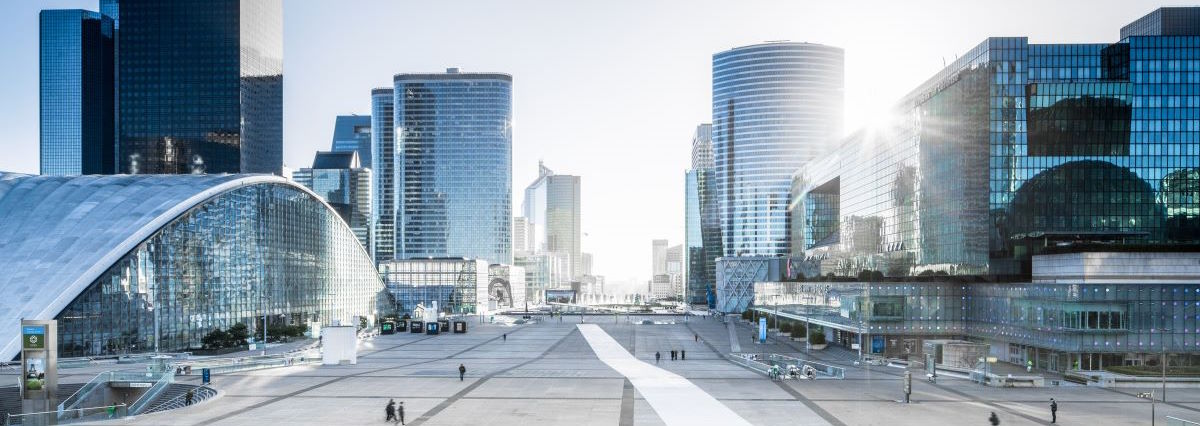On Sunday October 28th, Brazil traded a step back in time for a leap of faith into the unknown. The people ditched another workers’ party (PT) presidency and elected Jair Bolsonaro. The business community embraced the sheen of a self-designated ultraliberal over the nostalgia of a left-wing statist.
- President-elect Jair Bolsonaro and his outwardly pro-business policy platform are the “least worst” choice for corporates. In the short-term, we expect quick wins with reforms that only need a simple majority in Congress. These reforms will appeal to a broad pro-business and conservative audience. The positive confidence shock could add roughly +0.3pp to economic growth over the next year. Bolsonaro’s business environment reform could also lead to the creation of 90 000 additional companies in 2019 compared to 2018.
- Yet, the relief for corporates could be short-lived. The comeback of market volatility and increase in risk premium, and hence borrowing costs, is right around the corner, for three reasons:
(i) Unrealistic or vague proposals: Bolsonaro’s economic program contains no impact assessments. This could unnerve markets should he not detail his plan before taking office. Besides, his key budget proposal (to reach primary fiscal balance in 2019) is unrealistic. It involves a huge fiscal adjustment of 2.4% of GDP. Such austerity could cut as much as -1.2pp to real GDP growth in a year, while Brazil’s yearly growth rate is currently barely above +1.3%.
(ii) Governability issues: Likely to arise in Congress, delaying the critical pension reform. Bolsonaro would need between ~ 60% and 80% of votes from outside his coalition and opposition to pass a pension overhaul in Congress.
(iii)“Brazil first” and instability of the policy platform: A resurgence of Bolsonaro’s interventionist and nationalist past would jeopardize the orthodox agenda.
- What does it mean for corporates? In the context of an underwhelming outlook for economic growth in Brazil (+2.5% in 2019), and shrinking global liquidity, corporates are not home and dry yet
Governability issues and stalling debates on pensions would lead to an increase in Brazil’s risk premium, putting corporate debt at risk. On the watch list is the retail sector, which has the highest share of debt at risk (58.4%), followed by automotive suppliers (47.8%), textiles (43.5%), food (38.2%) and energy (9.2% but highest nominal value USD18.2bn).
Uncertainty surrounding the economic program and its feasibility could also trigger a currency depreciation. This would hurt foreign-input dependent sectors: transport equipment, household equipment, machinery and equipment, and electronics. Together, their output account for less than 6% of total Brazilian output. The May 2018 truckers’ strike was also a proof of the systemic importance of the transportation sector in Brazil’s economy.
Heads I win, tails you lose? Bolsonaro, the least worst for corporates
The election of Bolsonaro is the least worst of the two possible outcomes for corporates, as it provides short-term relief and avoids the return to a PT (Workers’ party, left-wing) presidency.
For companies, it’s “PT, Não” (“not the PT!”)
In the PT’s program, the main pain points for markets were:
- The elimination of the fiscal spending cap put in place by former president Temer’s administration. This would increase the space for growth in public spending but harm market confidence as the cap was a safeguard for fiscal responsibility.
- The overturning of the Temer administration labor reform which could make the timid recovery of employment more difficult.
- The switch to a dual mandate for the central bank, which would increase worries of government meddling in monetary policy.
A move to the center is still on PT candidate Fernando Haddad’s agenda. Yet market fears in case of Haddad’s victory could have caused Brazil’s risk premium to spike and put additional pressure on the Brazilian real (BRL). Similar to market sanctions we saw in May and June 2018, it could have further weakened the economic recovery and reversed the positive trend in company insolvencies.
Bolsonaro’s pro-market short-term relief
Bolsonaro’s administration will implement pro-market quick wins while attracting foreign investment. So far since the first round, the stock market gained -2.3% and the real +1.9%. This market cheering could be considered a financial stamp of approval of his initial policy plans. Lower interest rate spreads for Brazil should trigger a small boost to the economy, adding a modest +0.3pp to economic growth over a one-year horizon. Among confidence-boosting measures:
The Paulo Guedes card and the central bank’s Independence Day: Bolsonaro committed to creating a super-ministry of economy headed by Paulo Guedes, a University of Chicago ultra-liberal economist. Guedes is likely to respect central bank independence and be fiscally responsible.
Privatizations – let the FDI flow? Jair Bolsonaro has praised privatization as a way to recollect public money. It should benefit State Owned Enterprises (SOEs) as well as large foreign companies investing, and redirect much needed funds to infrastructure (such as airports, roads and ports). According to our estimations, Brazil would need close to USD600bn of infrastructure investment by 2030 to reach the standard of Chile’s infrastructure.
Adeus “Brazil cost"? If you ask any CEO of a Brazilian or foreign company in Brazil what their main impediment to doing business is, chances are they will invoke the “Brazil cost”. Currently you need 79.5 days to start a business in Brazil, against around 30 days on average in Latin America. World Bank economists (Klapper & Love, 2011) estimate that a 40% drop or higher in the number of days produces significant outcome in terms of registered businesses as measured by the entry density . A decrease of 60% in the number of days to start a business in Brazil as suggested by Bolsonaro (to match regional average) would increase the entry density ratio by 0.581. Given the working age population in Brazil in (~170mn), this would amount to 90,000 additional companies registered in 2019 compared to 2018, all else being equal. Latest data points to only 21 000 new companies registered in 2016.
No medium-term game changer – but probable disenchantment
While uncertainty seems to have been priced out of markets, we argue it is too early for corporates to rejoice. First, some of Bolsonaro’s key proposals are either vague or unrealistic. Second, the reasons for last spring’s market sanctions – namely the challenging outlook for pension reform – will still be valid once the new president takes office. Third, the stability of Bolsonaro’s ultra-liberal policy platform over the medium-term is questionable, given the candidate’s history as an interventionist and nationalist.
Austerity: Brazil can only take so much…
Jair Bolsonaro’s key budget proposal (reach primary fiscal balance in 2019) is unrealistic. The IMF expects a primary deficit at -2.4% of GDP at the end of 2018. Trimming that deficit involves a huge adjustment of 2.4% of GDP. Given Brazil’s estimated fiscal multiplier (in the literature), a 1% change in the primary balance leads to a 0.5% change in GDP growth. Such adjustment could cut as much as -1.2pp to real GDP growth in a year – while Brazil’s yearly growth rate is currently barely above +1.3%. Despite the positive confidence shock, it is hard to imagine a Bolsonaro administration willingly extinguishing the feeble spark of Brazilian growth in their first year in office. Besides, Bolsonaro still has to detail his plan to fight corruption, the scope of privatizations, share the impact assessment of his tax plans and most importantly, detail his shift to a capitalization pension regime. Finally, hitting the rewind button to Dilma’s second mandate reminds us that she partnered with a University of Chicago Economist as well, Joachim Levy, but could not convince markets for long.
Keep your eye on the ball: Pension reform still not so likely
Precisely, markets are overly confident in Bolsonaro’s ability to pass a pension reform. Such reform would need a three fifth majority in Congress (as do all constitutional reforms). Indeed, our calculations show that left-wing opposition (taking out all center parties) would control 28% of Congress. Bolsonaro currently controls 9% of Congress. Starting from those 9% he would need the support of 80% of parties that are neither in the opposition nor in his presidential coalition (i.e. center-left, center-right and right-wing parties) to pass a constitutional reform. In the case of the center-right and morally conservative parties rallying his coalition, Bolsonaro could secure a coalition of around 250 members of Congress. But he would still need to convince ~60% of the other non-opposition and non-coalition members. And that’s leaving aside the fact that he could also face severe opposition from the street, especially since he is such a polarizing figure.
The only element we have on Bolsonaro’s pension reform is that it plans a shift to a capitalization regime of pensions. Contrary to the pay-as-you go pension model in which today’s employed pay for the pensions of today’s retirees, the capitalization regime one pays contributions to fund their own retirement.
An unexpectedly good result at congressional elections improves the governability of Bolsonaro’s administration. Yet the probability of passing a constitutional reform such as the pension reform – which markets have been expecting for the past year – remains low. The business community praised President Michel Temer back in 2017 for his negotiation skills in Congress and economic “dream team”. Yet pension reform negotiations lingered and proved to be – by far – the most difficult ones.
How Bolsonaro could score his own goal
Bolsonaro’s opportunistic ultraliberal doxa could clash with his nationalistic and interventionist history in Congress, where he has voted against the successful stabilization plan of President Cardoso or Plano Real in 1994 and aligned with PT views several times over the past two decades.
First, it looks like he is already backing down on the privatizations of Petrobras and Eletrobras, two major state-controlled energy giants, in the name of national sovereignty. Second, he has struggled to keep control over his troops. He had to disavow his vice-president’s comments on wages and tone down an ally’s ardent criticism of President Temer’s pension reform plan. In addition, Paulo Guedes is currently being investigated in a case of fraud in pension fund investments, which weakens Bolsonaro’s anti-corruption platform. Bolsonaro’s latest comments on media are also yet another reason to compare him to US President Trump. Yet Brazil has absolutely no fiscal leeway to boost growth and cannot afford erratic policy-making (for example, an infringement upon central bank independence) because it is so scrutinized by markets and still recovers from its most severe recession on record.
What it means for corporates: Not home and dry yet
Not a good time for Brazilian industries
Market nervousness and fear of a PT administration is partly explained by the industry risk picture in Brazil. Industry risk in Brazil bottomed out in 2017 and started to improve slowly in line with the macroeconomic recovery and emergence of the country from recession. Since Q4 2017, Euler Hermes has recorded 8 sector risk upgrades and 0 downgrades. Yet Brazil’s industry risk remains relatively high: 61% of Brazilian sectors are still rated “sensitive” risk against only 23% in the world. And no sector is rated “low risk”, compared to 11% of sectors in Latin America.
Corporate debt would be at risk with an increasing risk premium
On your debt risk watch list: retail, food, textile, automotive suppliers and energy
The rise in US interests rates passes through to the Brazilian economy. The economic literature suggests an increase of 100 basis points in U.S. long-term yields will be followed by a statistically significant rise of about 200 basis points in long-term Brazilian rates after 6 months. Hence, as we expect the 10-year US yield to end 2018 at 3% and rise to 3.4% at the end of 2019, this entails a rise of the Brazilian 10-year yield by 800pbs.
Besides, prospects of stalled negotiations of the pension reform in Congress could cause yields to rise further. After President Temer lost his remaining political capital protecting himself from being convicted for corruption, his coalition failed at passing his pension reform proposal. Along with the broader emerging market stress, this started causing market turmoil as early as in May 2018, as the probability of passing the reform decreased with election uncertainty.
Table 1: Characteristics of debt at risk in notable Brazilian industries















